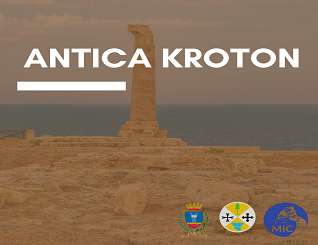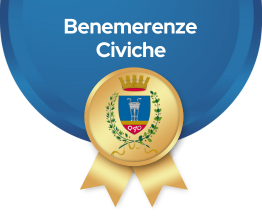Prodotti Tipici

Tra arte, cultura e tradizioni millenarie Crotone è da scoprire anche nei suoi sapori: dai primi ai secondi ai contorni, dai vini al dolce, dal salato al piccante, la città ha un panorama del gusto enogastronomico con una gamma di prodotti unici e imperdibili.
▪ CAVATELLI
Gnocchetti di pasta fresca, preparata con farina di grano duro, acqua e sale. Si consumano come primo piatto conditi con sugo al ragù di carne suina.
▪ PANE DI CUTRO
Preparato con un'alta percentuale di farina di grano duro, farina di grano tenero, lievito naturale, acqua e sale, si caratterizza per la forma, allungata o tondeggiante, e per la crosta, spessa e croccante. Può essere conservato più giorni senza perdere la sua freschezza. È annoverato tra i pani migliori d'Italia ed è esportato anche in molte regioni del nord.
▪ PECORINO
Formaggio tipico ricavato dal latte ovino, di produzione locale.
▪ SALSICCIA
Salume preparato con carne di coscia suina, finemente tagliata, e lavorata con sale e pepe rosso. Con l'impasto ottenuto si riempiono le budella naturali.
Tra i dolci tipici si ricordano soprattutto quelli pasquali, le "cuzzupe" e le "pitte", e quelli natalizi i "crustuli" e i "tardiddri".
► Le cuzzupe sono dolci fatti con farina di grano duro, lievito, acqua ed uova; normalmente gli si dà la forma di lettere dell'alfabeto, soprattutto le iniziali dei nomi dei bambini, di uccellino e di altri animali. Qualcuno, nel caso in cui nella famiglia ci sia una coppia di fidanzati, di solito la suocera nei confronti del futuro genero, usa fare una grande cuzzupa a forma di cuore all'interno della quale vi incastona alcune uova, una volta pronta la teglia si inforna a 180 gradi per 20-25 minuti, a fine cottura alcuni usano cospargere la cuzzupa con "l'annaspero": una cremina bianca fatta con zucchero, bianco d'uovo e succo di limone che va sbattuta continuamente per non farla solidificare. L'operazione va effettuata subito dopo la cottura altrimenti l'annaspero non si lega alla cuzzupa, al di sopra ancora alcuni aggiungono, come se non bastasse, granelli di cioccolata colorata.
► Le pitte, sono dolci essenzialmente pasquali anche se qualcuno usa farle anche in occasione del Natale. Il nome pitta deriva dall'arabo "pita" che significa schiacciata, in effetti la pitta è fatta di sfoglie di pasta di grano duro che viene schiacciata con un mattarello e distesa all'interno di una teglia metallica e circolare. La prima sfoglia è grande in modo tale da ricoprire il fondo dell'intera teglia, successivamente iniziando dal centro si inizia a riempirla con delle sfoglie circolari con al loro interno uva passa e mandorle, vista dall'esterno sembra una rosa. Una volta riempito ogni spazio della teglia con queste girelle, viene infornata a 180 gradi per circa un'ora ed un quarto. All'uscita alcuni usano bagnarla con il vermut, altri aggiungono un po' d'olio, altri ancora del miele. Per la cottura alcuni usano i forni di casa, ma altra usanza tipica è quella di recarsi nei panifici del luogo nella settimana precedente le festività. Poiché le teglie molte volte sono simili, onde evitare di confonderle, ognuno mette un segno di evidenza, questo può essere rappresentato da un confetto, da un ramoscello di ulivo, da uno stuzzicadenti ecc...

- Vigneti del Cirotano
► I crustuli, sono dei dolci fritti fatti con farina di grano tenero con un impasto molto liquido. Acceso il fuoco al tegame contenente l'olio, le donne, preso in un pugno l'impasto, fanno dei cerchi sopra all'olio bollente facendovi scendere l'impasto, questo prende subito forma e si gonfia unendosi in una forma vagamente circolare. Con un mestolo metallico viene girato per farlo cuocere anche dall'altra parte. A cottura finita, che dura poco meno di un minuto, di solito vengono consumati caldi prima passandoli in un piatto contenente zucchero e poi in un altro contenente vino cotto. I tardiddri, sono dei dolci fritti fatti con farina di grano duro e ricoperti miele. Di solito messi in un piatto uno sopra l'altro, se consumati dopo qualche giorno, sono difficili staccare per la solidificazione del miele.
► Come produzioni vinicole, il territorio è ricco di vigneti pregiati nelle terre a nord di Crotone. Vini tipici del territorio sono: il rinomato Cirò Melissa D.O.C., che costituisce la fonte primaria dell'economia del Cirotano, e Val di Neto dal sapore tipico nel rispetto delle tradizioni e della storia che hanno fortemente caratterizzato questo tratto della costa calabrese dall'epoca della Magna Grecia.
Among Crotone's ancient art, culture and tradition, it is also to be found in its flavors: from the first to the second to the outline, from wines to sweet, salty to spicy, the city has a panorama of the gastronomic taste with a unique and unmatched range of products.
▪ CAVATELLI Fresh pasta gnocchi, prepared with hard wheat flour, water and salt. They are consumed as a first course dish with sauce on the ragu of pork.
▪ BREAD FROM CUTRO Prepared with a high percentage of hard wheat flour, soft wheat flour, natural yeast, water and salt, is characterized by the shape, lengthened or rounded, and for the crust, thick and crunchy. It can be stored more days without losing its freshness. It is included among the best Italian breads and is also exported to many regions of the north.
▪ PECORINO CHEESE Cheese made from sheep's milk, local production
▪ SALSICCIA Salami prepared with pork thighs, finely cut, and worked with salt and red pepper. With the dough you get filled with natural buds.
Among the typical sweets are the Easter cakes, the cuzzupe and the pitte, and the Christmas ones the "crustuli" and the "tardiddri".
► Cuzzupe: are sweet made with hard wheat flour, yeast, water and eggs; Normally they are shaped like letters in the alphabet, especially the initials of the names of children, birds and other animals. Someone, if there is a couple of boyfriends in the family, usually their mother-in-law toward the future generous, use a large heart-shaped cuzzupa inside of which some eggs come in, once the baking tray is ready At 180 degrees for 20-25 minutes, at the end of the cooking some use to sprinkle the cuzzupa with "the annaspero": a white creme made with white sugar of egg and lemon juice to be bumped continuously for not to solidify it.
The operation should be carried out immediately after cooking otherwise it will not cling to the cuzzupa, above the alcohols add as if it were not enough, colored chocolate grains.
► Pitte: they are essentially easter sweets even if someone uses them also in Christmas things. The nom pita comes from Arabic "pita" which means crushed, in fact it is made of pasta of hard wheat paste that is crushed with a rolling pin and exuded to the inside of a metal and circular baking tray. The first sheet is large enough to cover the bottom of the whole pan, then starting from the center begins to fill it with circular leaves with inside raisins and almonds, dripping from the outside looks like a rose. Once filled with each baking tray, these bins are fired at 180 gtadi for about one hour and a quarter. At the exit some use it to wet it with the vermouth, others add some oil, some honey. For cooking, some use oven ovens, but another typical way is to go to the bakeries in the week before the festival. Since the trays are many times similar, in order to avoid confusing them, each one puts a sign of evidence, this can be represented by a confetti, an olive branch, a toothpick, and so on.
► Crustuli: They are sweet made with soft wheat flour with a very liquid dough. Turning on the fire in the oil-containing pan, the women, fired the dough, make circles over the boiling oil by lowering the dough, which immediately takes shape and swells by joining in a vaguely circular shape. With a metal spindle it is turned to cook it on the other side. After finishing, which lasts less than a minute, they are usually warmed first by passing them into a plate containing sugar and then another containing cooked alive. Tardiddri, they are fried desserts made with dull wheat flour and covered with honey. Usually put into a plate one above the other, if consumed after a few days, they are difficult to detach for the solidification of honey.
► As wineries, the territory is rich in valuable vineyards in the lands north of Crotone. Typical wines of the area are: the renowned Cirò Melissa DOC, which is the primary source of the economy of Cirotano, and Val di Neto with a typical flavor in respect to the traditions and history that have strongly characterized this stretch of the Calabrian coast from the era of Magna Grecia .
Fonte: Settore Turismo
Data ultimo aggiornamento: 17 Agosto 2017
Revisionato da: Alessandra Vrenna
Traduzione a cura di:





















